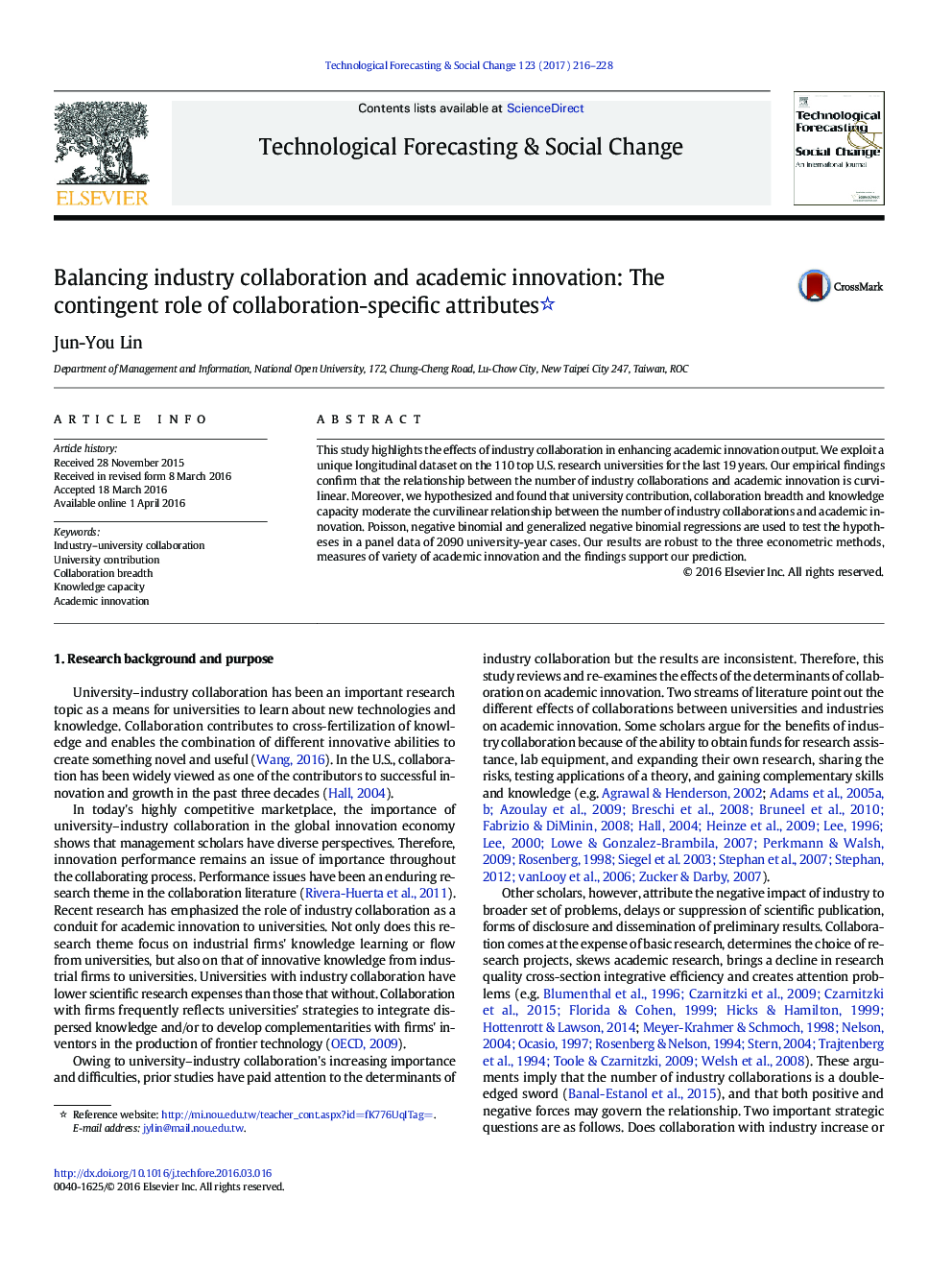| Article ID | Journal | Published Year | Pages | File Type |
|---|---|---|---|---|
| 5036816 | Technological Forecasting and Social Change | 2017 | 13 Pages |
â¢Factors related to academic innovation are identified.â¢The number of industry collaborations has a curvilinear relationship with academic innovation.â¢University contribution strengthens the benefits and lessens the costs of collaborations.â¢Industry collaborations also depend on collaboration breadth and knowledge capacity.
This study highlights the effects of industry collaboration in enhancing academic innovation output. We exploit a unique longitudinal dataset on the 110 top U.S. research universities for the last 19Â years. Our empirical findings confirm that the relationship between the number of industry collaborations and academic innovation is curvilinear. Moreover, we hypothesized and found that university contribution, collaboration breadth and knowledge capacity moderate the curvilinear relationship between the number of industry collaborations and academic innovation. Poisson, negative binomial and generalized negative binomial regressions are used to test the hypotheses in a panel data of 2090 university-year cases. Our results are robust to the three econometric methods, measures of variety of academic innovation and the findings support our prediction.
